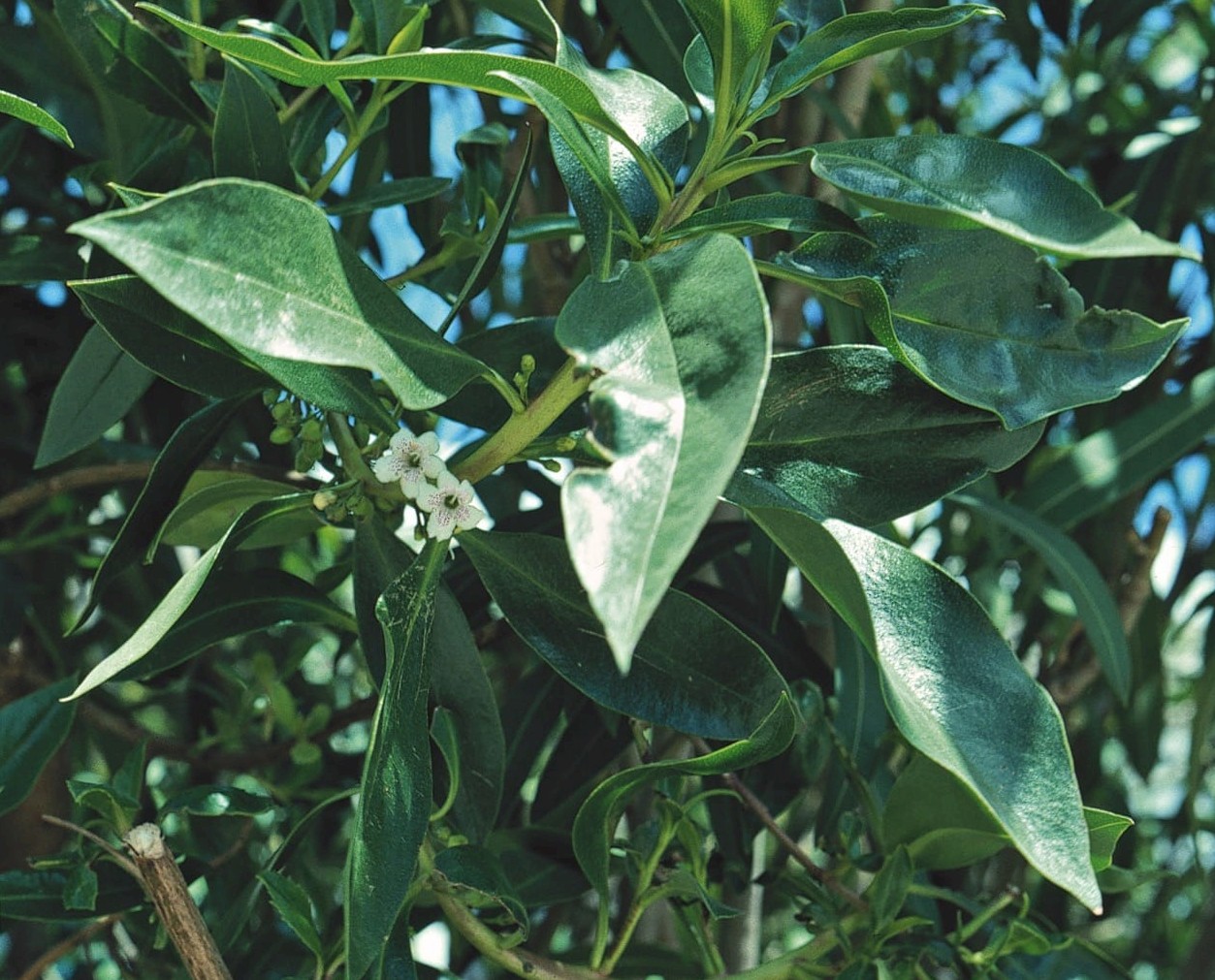Myoporum
Credits
Article from New Trees by John Grimshaw & Ross Bayton
Recommended citation
'Myoporum' from the website Trees and Shrubs Online (treesandshrubsonline.
Family
- Scrophulariaceae (formerly Myoporaceae)
The 28 species of Myoporum occur mainly in Australia and New Guinea, but with representatives in Mauritius, eastern Asia, New Zealand and Hawaii. They are small trees or shrubs with entire, alternate, petiolate leaves which are usually lanceolate, acute and with dentate margins. Inflorescences are axillary, composed of numerous clustered cymes; peduncles reduced or absent. The flowers have a five-lobed campanulate calyx; the corolla, usually white, is also five-lobed, with petals equal in size or with two larger petals below; stamens four (to five). The fruit is an ovoid drupe of various colours, from white, pink and purple to black (Theisen & Fischer 2004).
With the exception of M. laetum, the genus Myoporum is scarcely known in temperate horticulture but a number of other species are cultivated in warmer climates, and can be particularly useful in coastal and sandy areas. Their principal horticultural value lies in their thick-textured evergreen foliage, as the flowers are usually small and inconspicuous, but the fruits in various colours also add a later season of interest (Huxley et al. 1992).

